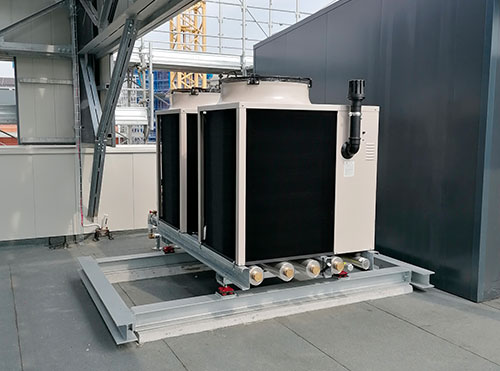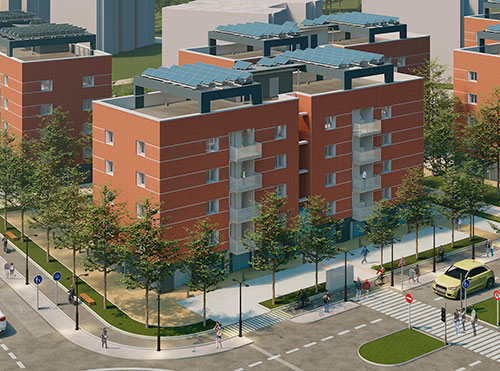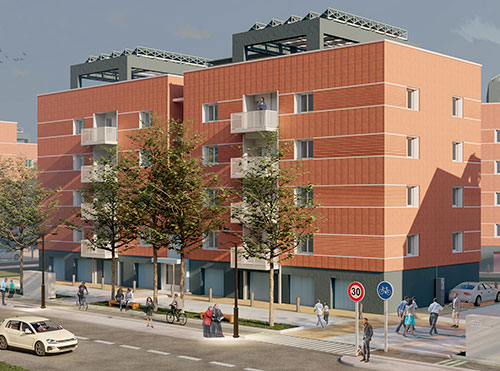Energy and urban redevelopment of a residential neighbourhood
"Il Nido" Residential District
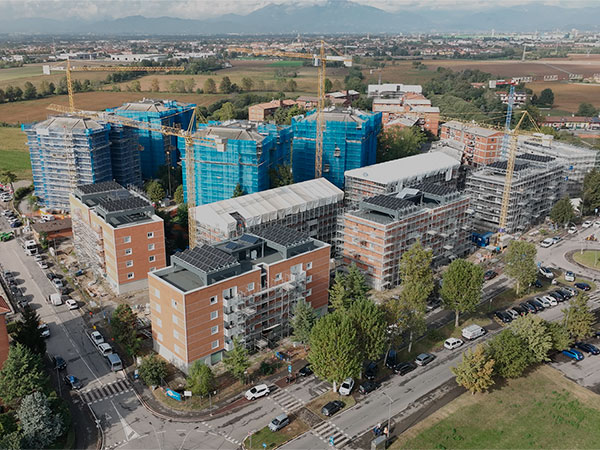
Needs
A deep, integrated redevelopment that, thanks to national incentive measures for energy efficiency, involved 8 existing apartment buildings from the 1960s, located in the industrial area of Zingonia.
Each building includes 16 flats over 4 floors. The energy optimisation intervention included the replacement of the old boiler system with thermally driven heat pumps, the installation of a ventilated façade, the placement of photovoltaic and solar thermal systems on the roof, and the replacement of windows and shutters with new, higher-performing materials.
The central heating system is designed for both space heating and domestic hot water production, with individual management and metering for each housing unit.
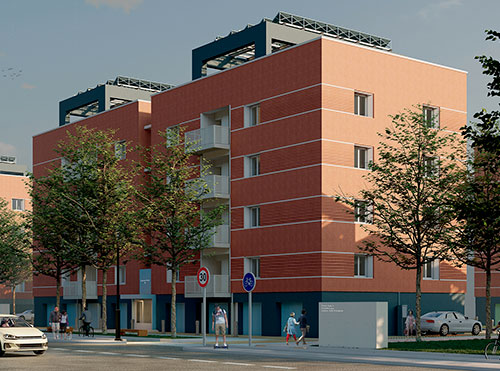
The Robur Solution
For each building, 2 externally installed, preassembled heat pumps mounted on a single base operate in tandem to provide thermal energy for heating the 16 apartments. One of the units can be temporarily and appropriately redirected to thermally charge the domestic hot water storage tank.
Advantages
- Energy class upgrade from G to A3.
- Consumption analysis during the first winter season confirmed that the efficiency upgrade with heat pumps resulted in a gas consumption reduction of approximately 75%.
Technology Comparison
The design considered two different technological solutions: the first consisting of electrically powered air-source heat pumps, and the second of gas-powered absorption air-source heat pumps.
Among the main reasons for choosing Robur’s solution over the electric one:
- Use of a natural refrigerant (ammonia).
- No need for specialised maintenance related to F-Gas refrigerant handling (F-Gas certification and system registration not required).
- Use of gas fuel already available at the installation site.
- Hot water outlet temperature up to 70 °C, making it suitable both for centralised domestic hot water production and for heating the apartments (with existing heat emitters), without additional thermal integration for anti-legionella cycles.
- The apartment buildings did not have sufficient electrical supply to power electric heat pumps: an increase in the area’s low-voltage capacity by more than 500 kW would have been required, or the construction of a dedicated transformer substation from medium to low voltage.
Words from the Project Leaders
“Today, with the experience we’ve gained, we have the technological know-how to state that what was done in the Zingonia neighbourhood can be successfully replicated in many other residential apartment complexes, whether they have individual or centralised systems.”
Arch. Simonetti – Administrator of Concreta Srl, project coordinator















